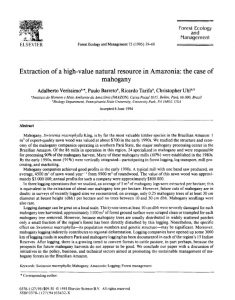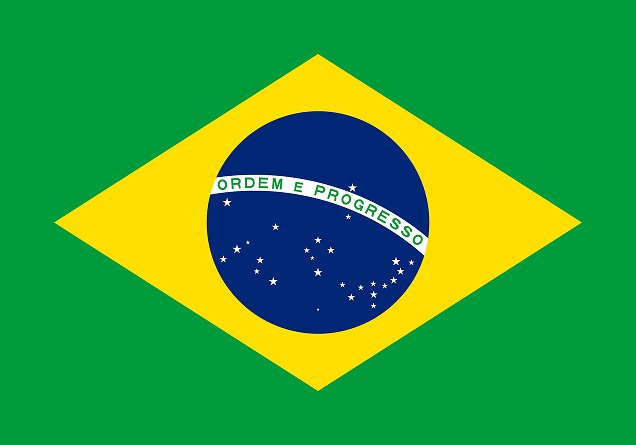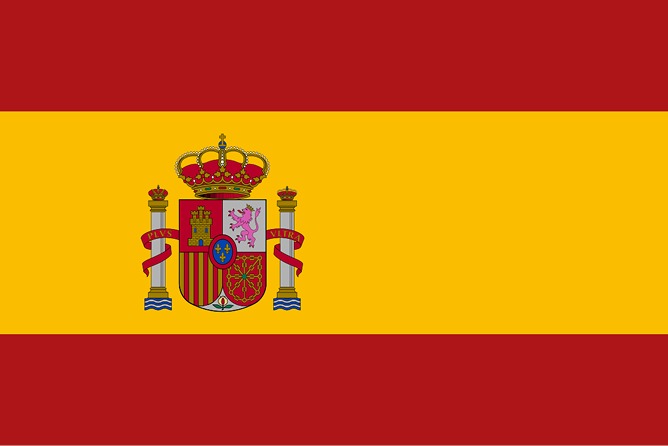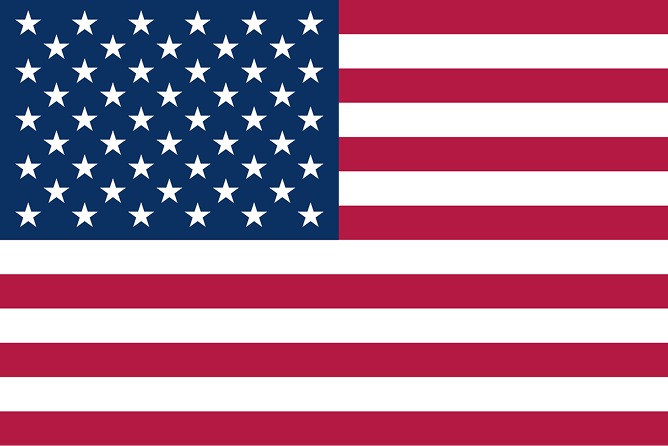Não conseguimos encontrar a internet
Tentando reconectar
Algo deu errado!
Aguarde enquanto voltamos ao normal
Extraction of a high-value natural resource in Amazonia: the case of mahogany
01/03/95| Título | Extraction of a high-value natural resource in Amazonia: the case of mahogany |
|---|---|
| Autores | Adalberto Veríssimo (a) Paulo Barreto (a) Ricardo Tarifa (a) Christopher Uhl (b) |
| Vinculação dos autores | (a) Instituto do Homem e Meio Ambiente da Amazônia (Imazon) - Belém (PA), Brasil (b) Instituto do Homem e Meio Ambiente da Amazônia (Imazon) - Belém (PA), Brasil Biology Department, Pennsylvania State University, University Park, PA 16802, USA |
| Ano de publicação | 1995 |
| Meio de publicação | Forest Ecology and Management (Volume 72, Issue 1, March 1995, Pages 39-60) |
| DOI (Digital Object Identifier) | https://doi.org/10.1016/0378-1127(94)03432-VV) |
VERÍSSIMO, A.; BARRETO, P.; TARIFA, R.; UHL, C. Extraction of a high-value natural resource in Amazonia: the case of mahogany. Forest Ecology and Management, v. 72, p. 39-60, 1995.
 Abstract
Abstract
Mahogany, Swietenia macrophylla King, is by far the most valuable timber species in the Brazilian Amazon: 1 m3 of export-quality sawn wood was valued at about $700 in the early 1990s. We studied the structure and economy of the mahogany companies operating in southern Pará State, the major mahogany processing center in the Brazilian Amazon. Of the 86 mills in operation in this region, 24 specialized in mahogany and were responsible for processing 90% of the mahogany harvest. Many of these mahogany mills (60%) were established in the 1980s. By the early 1990s, most (91%) were vertically integrated—participating in forest logging, log transport, mill processing, and marketing.
Mahogany companies achieved good profits in the early 1990s. A typical mill with one band saw produced, on average, 4500 m3 of sawn wood year−1 from 9900 m3 of roundwood. The value of this sawn wood was approximately $3 000 000; annual profits for such a company were approximately $800 000.
In three logging operations that we studied, an average of 5 m3 of mahogany logs were extracted per hectare; this is equivalent to the extraction of about one mahogany tree per hectare. However, future cuts of mahogany are in doubt: in surveys of recently logged sites we encountered, on average, only 0.25 mahogany trees of at least 30 cm diameter at breast height (dbh) per hectare and no trees between 10 and 30 cm dbh. Mahogany seedings were also rare.
Logging damage can be great on a local scale. Thirty-one trees at least 10 cm dbh were severely damaged for each mahogany tree harvested; approximately 1100 m2 of forest ground surface were scraped clean or trampled for each mahogany tree removed. However, because mahogany trees are usually distributed in widely scattered patches only a small fraction of the region’s forest has been directly disturbed by this logging. Nonetheless, the specific effect on Swietenia macrophylla—its population numbers and genetic structure—may be significant. Moreover, mahogany logging indirectly contributes to regional deforestation. Logging companies have opened up some 3000 km of logging roads in southern Pará and mahogany logging has been documented in each of the region’s 15 Indian Reserves. After logging, there is a growing trend to convert forests to cattle pasture, in part perhaps, because the prospects for future mahogany harvests do not appear to be good. We conclude our paper with a discussion of initiatives in the policy, business, and technical sectors aimed at promoting the sustainable management of mahogany forests in the Brazilian Amazon.
 PT
PT
 ES
ES
 EN
EN

